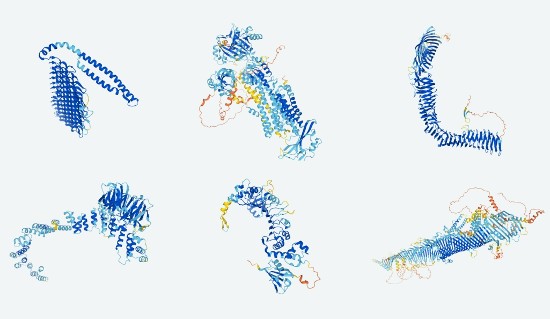A few years ago I wrote about a game created by scientists in the Institute of Protein Design at The University of Washington designed to help them understand the predictability of protein structures and their role in diseases. It was called Foldit. First conceived back in 2008, those who chose to play the game were challenged to unlock protein designs to predict the way they fold. The game is still in play 14 years later.
What is it about proteins that have gamers trying to fold them? It is the natural tendency of proteins to fold as you see from the illustration that appears at the top of this posting. The folds can get pretty intricate. The folding is anything but random because the way a protein configures itself determines how it interacts with the cells in our bodies.
If you are not aware as of yet, research on proteins has been front and centre in our battle to defeat COVID-19. So what are they? Proteins in the human body consist of a bundle of amino acids (there are 20 in our species) that fold in multiple ways. The gamers who have been playing Foldit are not only human. Artificial intelligence tools entered the gaming sphere a few years ago and the results have been astonishing.
The most successful Foldit entry has been the British company DeepMind who in 2018 created AlphaFold. When it started playing the game it solved 25 of 43 protein-folding problems fairly easily. The nearest human competitor solved only three.
How does AlphaFold work? It uses two neural networks, the first focused on predicting distances between pairs of specific amino acids, and the second evaluating the possible angles of the chemical bonds between them. AlphaFold has been a success and now its creators are advancing its protein folding capabilities beyond gaming.
A story appearing in MIT Technology Review in the summer of last year described how AlphaFold was being used to predict the shapes of almost every protein in the human body along with hundreds of thousands of proteins found in other animals and plants including yeast, fruit flies and mice. At the time of publication of the MIT article, DeepMind had mapped 350,000 protein structures and predicted it would have over 100 million mapped before the end of 2021. The company is providing its mapping and identification results in a database of protein structures that researchers can download and study.
Meanwhile, in a parallel undertaking, The University of Washington, the creators of Foldit have been working on the Audacious Project to design and test millions of synthetic proteins to help address and solve five major challenges.
- The building of better vaccines for pathogens such as influenza and coronaviruses.
- Expanding beyond the 20 amino acids limit in designing new proteins borrowing from the more than 500 others found in nature.
- The creation of advanced protein containers for targeted drug delivery (adenovirus containers and mRNA colloidal nanoparticle-based vaccine delivery systems represents the outcome of this type of research already yielding results in the new vaccines we have seen developed in the last two years to address the COVID-19 pandemic).
- The designing of smart proteins that can identify and help target cancer and other unhealthy cells in our bodies.
- And finally, the making of new nanomaterials for manufacturing (a good example where this can be applied is in improving the energy conversion efficiency of solar photovoltaics through the incorporation of nanofabricated new materials and production techniques).










[…] the newest of these AI tools is one from Google DeepMind called AlphaFold. It is helping scientists understand the vast number and function of proteins. Why are proteins so […]
[…] AlphaFold, a product of DeepMind, a British company that is now a part of Google, is being used by New York City-based Therapeutics is designing molecules that replicate selective actions of natural proteins that affect brain function focusing on neurotransmitters associated with many neurological diseases such as schizophrenia and bipolar disorder. […]